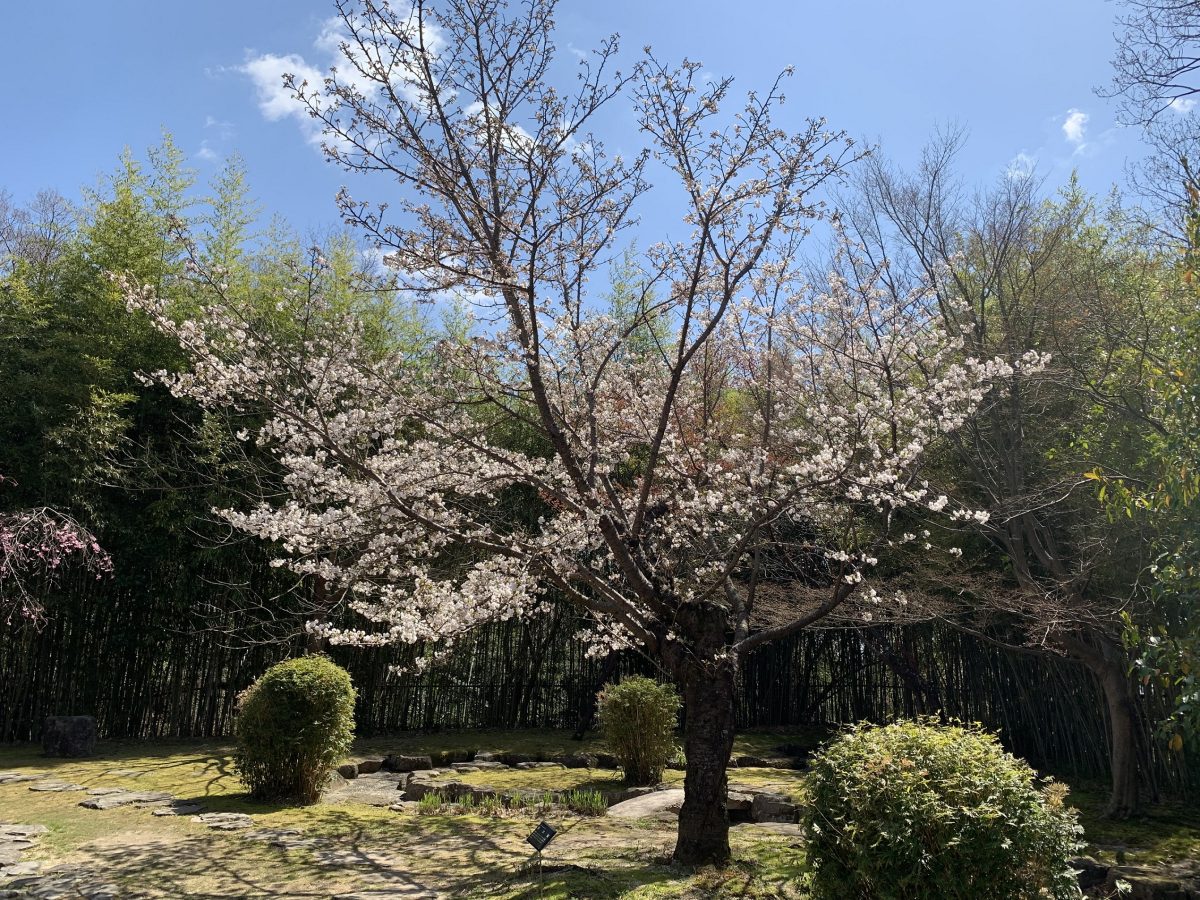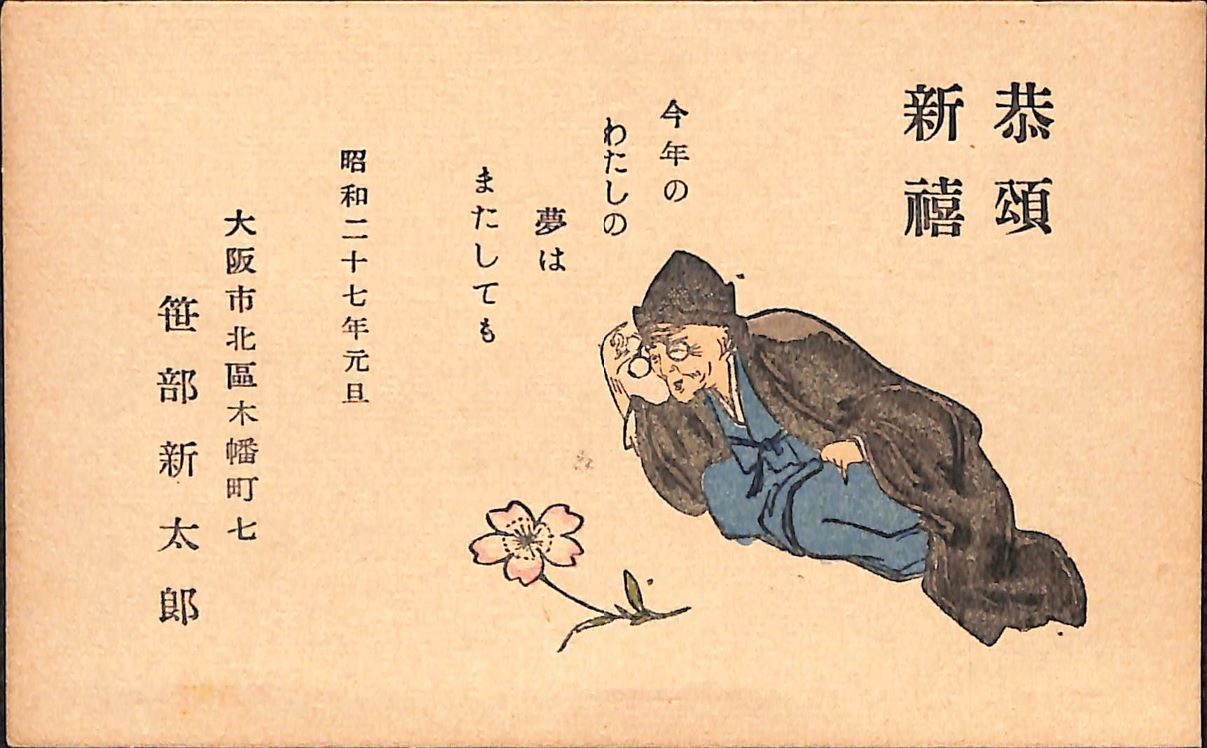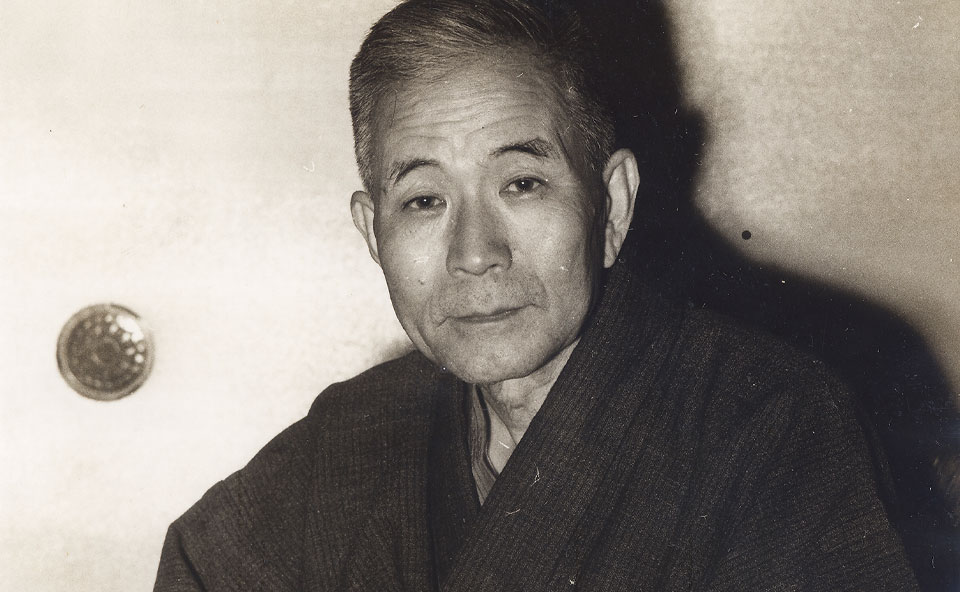Hello! Last month instead of posting a new article of “All About Sakura”, we posted an article on the “Sake Talk” page with the title “Newly-Found Connection Between Sake and Cherry Blossom Trees”.
The spring exhibition, Sasabe Sakura Collection “Days of Cherry Blossom Trees” is now being held until June 6. Please visit the museum to see the exhibited works about cherry blossoms!
In this post, we would like to introduce the sasabe-zakura cherry blossom tree which was named after Sasabe Shintaro. First, let’s take a look at its history.
In 1960, at the age of 73, Sasabe Shintaro moved to Okamoto, Higashinada Ward, Kobe City from Kita Ward, Osaka City. Soon after, he found a cherry blossom tree which was growing naturally in the garden of his residence. As it grew, he realized it was a new variety he had never seen, so he began keeping record of its growth from 1964.
-457x1200.jpg)
dated June 13, 1964.
This record shows that the length of the longest branch from the east to the west is approx. 270cm, and from the south to the north, approx. 240cm. The trunk circumference was approx. 11 cm, and the height was approx. 350 cm. Because the flower first bloomed five years after the seed sprouted, Sasabe named it “gosai-zakura” (lit. “five-year-old cherry blossom tree”).
Sasabe kept recording the growth of the tree every year during the same season and confirmed its steady growth. In 1976, twelve years after he began recording the growth of the tree, the trunk circumference near the root of the tree grew to approx. 78 cm, and the trunk circumference at the height of a man’s chest became approx. 69 cm. The trunk circumference near the root grew approximately 70 cm in 12 years. After Sasabe passed away, this cherry blossom tree was certified as a new variety by the former professor of Tokyo University of Agriculture, Hayashi Yasaka, in 1985. The flowers are double cherry blossoms with a light shade of red color, and the petals at the center stand up when in full bloom.
-1200x792.jpg)
Today, sasabe-zakura cherry blossom trees can be seen in many places including Okamoto-minami Park (Sakuramori Park), which was built on the site of the former residence of Sasabe Shintaro. Although the original tree introduced above has already withered, another seedling which was propagated by layering from the original tree, was planted and has been growing to this day. At the park, there are many more sasabe-zakura cherry blossom trees which were grown in various ways, such as raised from seeds, grafted, cutting and the like. In Nishinomiya City where the Sake Museum is located, a sasabe-zakura cherry blossom tree can be seen at Kitayama Botanical Garden. The tree was grafted from the original one at the former residence of Sasabe. As you can see in the photo below, the tree has been growing well.

Compared to other varieties, sasabe-zakura can only be seen at certain places, but we recommend seeing it at least once. We hope they are still blooming when you read this article, so that you might be able to see a sasabe-zakura cherry blossom tree!
Thank you and please look forward to the next article!








I’m looking forward to visiting Japan Mint next spring!